20 Best Tourist Attractions to Visit in Zimbabwe
1. Chilojo Cliffs
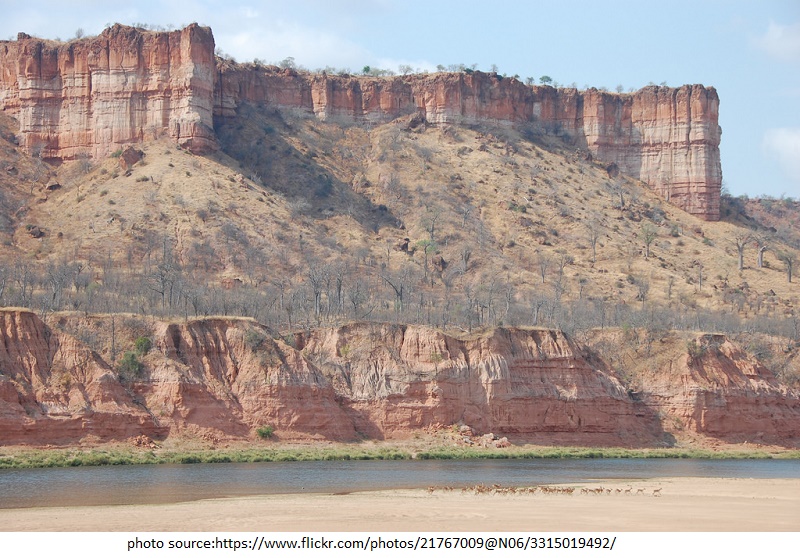
The Chilojo cliffs are located amid the great Gonarezhou National Park. They were formed as a result of a lengthy natural process including water and wind degradation, which happens over countless years. Even though the cliffs are seen in the park which is the main draw, they are amazing to observe. From over the red colored cliffs, a view of the Runde River can be experienced. This mesmerizing view obviously draws the attention of any visitor.
2. Victoria Falls
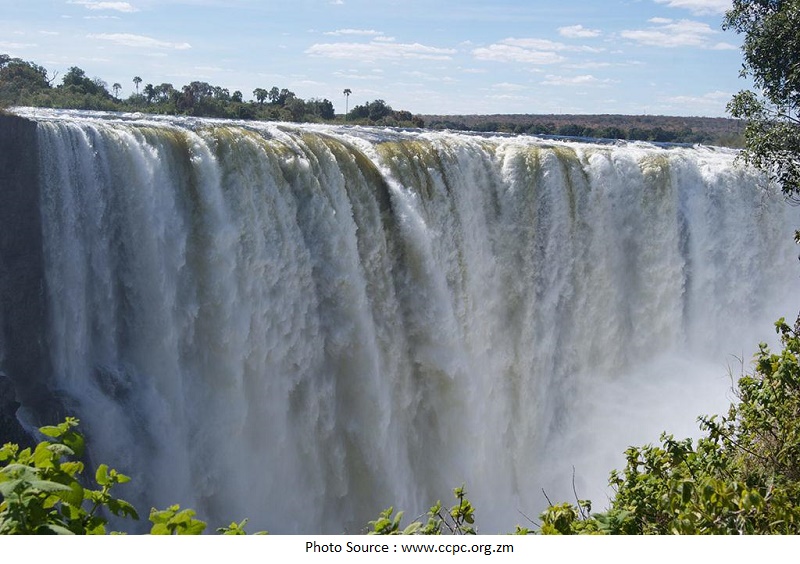
The glorious Victoria Falls is an evident must do, must visit and must-see tourist attraction. Victoria Falls town and resort offer plenty of entertainment activities which make it a great destination to visit. Besides the rumbling falls that stand on the booming Zambezi River which in themselves are the actual reason for the visit, there are a number of other hilarious activities that one can participate in. Guests can enjoy Bungee jumping, white water rafting, abseiling and of course, the glamorous riverboat cruising all in one place. The little town attracts such a great number of visitors each and every year. According to Zimbabwe tourism chief, nearly 2 million visitors have visited as of February 2016 (a nine percent rise from the past year’s 1.8 million). Because of its popularity, it must be first on any person’s tour and must do list when in Zimbabwe.
3. Lake Kariba
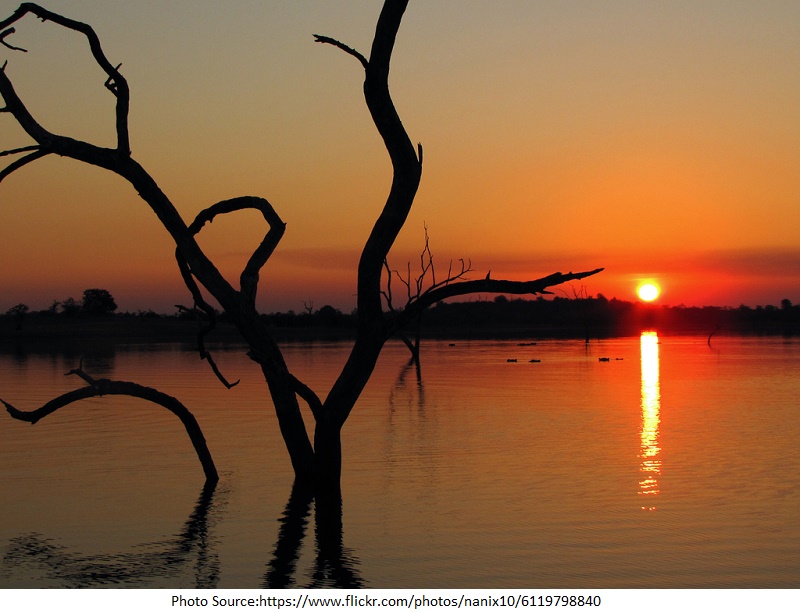
Located on the border of Zambia, this lake is one of the biggest manmade lakes on earth. It offers access to the exciting Kariaba Dam which is one of the most wonderful engineering feats in these parts. This lake is responsible for a rich ecosystem consisting of game, birds and fish. The tiny lakeside town attracts thousands of visitors a year to the absolute northern tip of the country. Visiting Kariba is a worthwhile effort. Besides the big lake and the cultural importance of the Kariba, once there one can enjoy plenty of entertainment activities including the customary African experience of game viewing, a fishing tour and best of all, an excursion on a boat house just living life while on the drift. Spectators can enjoy the red-pink African sunsets in the company of local people, as the evening hues fall over Antelope Island in far.
4. Kadoma
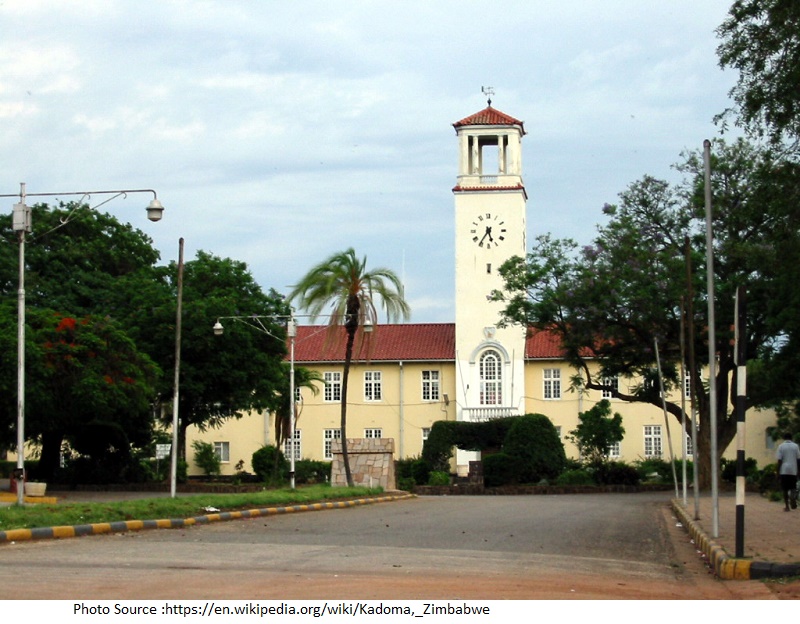
This dilapidated gold rush town is located 166 km by road, southwest of Harare. In the very heartlands of Zimbabwe, the town of Kadoma actually started life as the home of the miners and prospectors who crowded to the central provinces here. This mining area also provides copper and nickel. After the discovery of gold, Kadoma prospered quickly. Before 1990, the people of this area began cotton cultivation and as a result cotton related industries began their business here. Now, Kadoma is a richly-motivated place, with some colonial-style church towers and an agile local population of nearly 80,000. Visitors come here to know about Zimbabwe’s mineral wealth, and see the beauty of the swaying cotton field in the African breezes.
5. Gonarezhou National Park
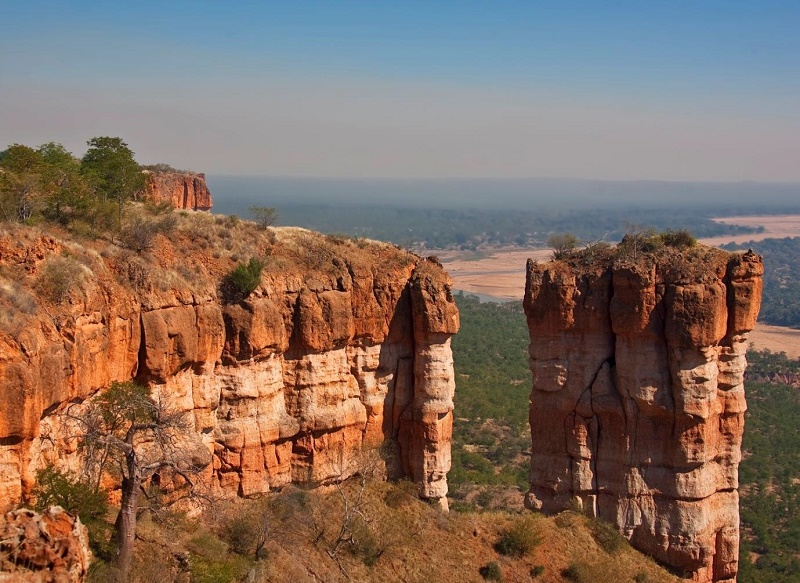
Gonarezhou means “place of many elephants.” This park is situated to the southeastern part of Zimbabwe and it covers a vast land of nearly 5000 square kilometers. The vista of Gonarezhou National Park is dominated by the rock-ribbed, rust-colored escarpments. The wildland is the home of a good number of big mammals. It also houses some rare species like the king cheetah. As the park is dissected by three rivers: the Save, Runde, and Mwenezi, the park’s wildlife thrives greatly for the adequacy of water. Fish, birds and larger animals crowd to the pools and oases that are formed by the rivers. Like most forests and mountains in Zimbabwe, this park is sacred and claims great respect from those who choose to visit here.
6. Matusadona National Park
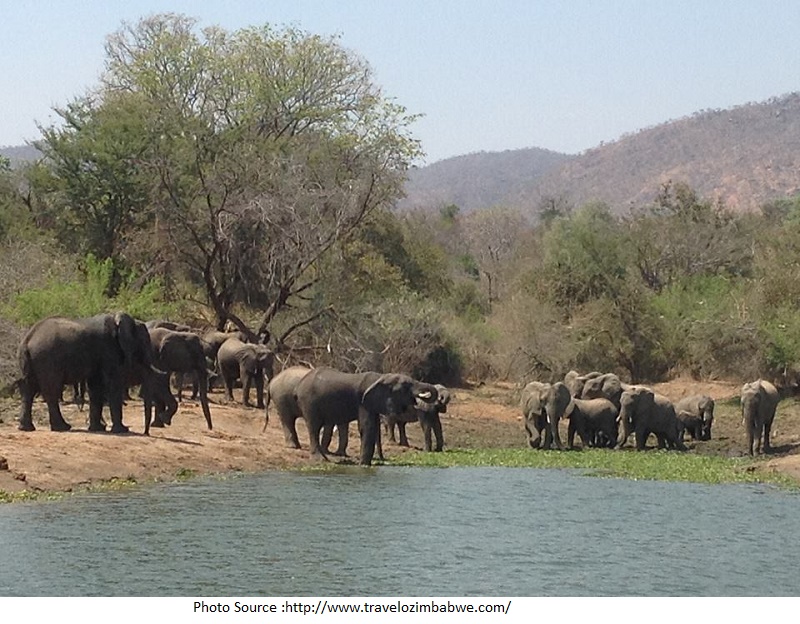
This park stands on the southern banks of the great water body, Lake Kariba. Matusadona National Park is originally the remains of the previous state of Rhodesia. Following the uprising, Zimbabwe annexed this area and maintained its protected status. The whole area is untouched and untrodden. It houses large mammals like Cape buffalo and elephants. The water of the Kariba Lake helps in forming vast grazing lands since the building of Kariba Dam. For the adequacy of water and grass, the wildlife thrives greatly here.
7. Mana Pools National Park
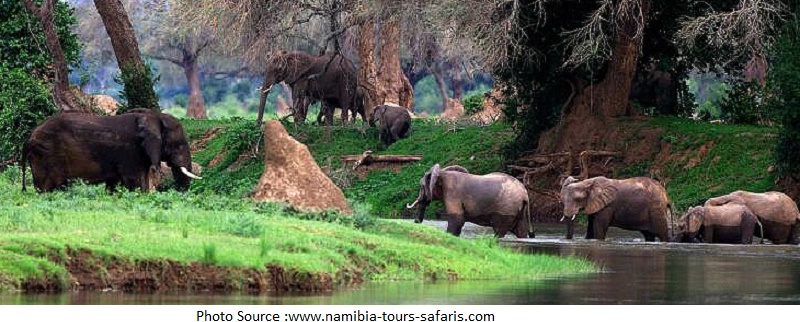
Mana Pools National Park is one of Zimbabwe’s most wild and outlying parks. Mana means four in Shona language, one of Zimbabwe’s major languages. These pools are contributed by the Zambezi River. In the wet season, when the rain falls, it creates a patchwork of watering holes. For the adequacy of grass and water, the varying wildlife here thrives and multiplies every year. The long pool is the biggest among the four pools. This pool offers a good number of crocodiles and hippos and herds of elephants that come here to bathe and drink. As it’s a top one game viewing destination, visitors are bound to catch a glimpse of big herbivores like zebra or elephant and occasionally a lion or a cheetah. Continuous trekking into the forest will lead you to come across the Zambezi River which acts as the border of Zimbabwe and Zambia.
8. Chinhoyi
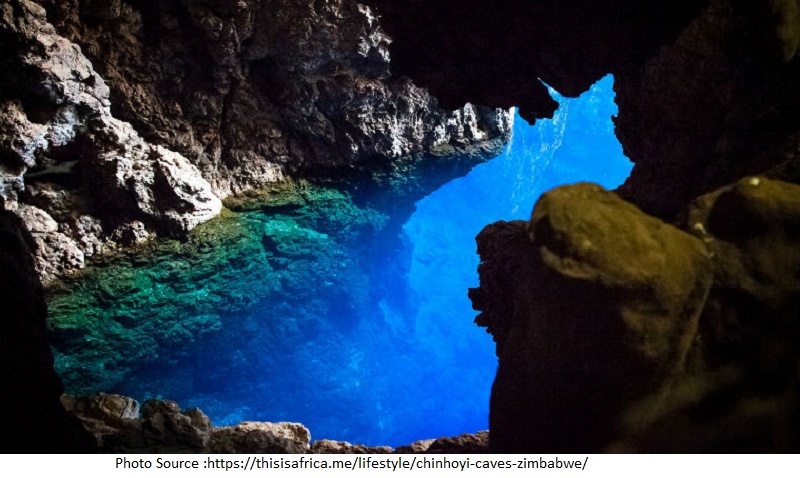
This little crossroads town stands on the western banks of the Manyame River across the border in Zambia and some 121 km by road, northwest of Harare. Chinhoyi actually depicts the picture of rural Zimbabwe. It sits among the lofty Sierra of the Mashonaland West Province. Chinhoyi is well known to the tourists for only one thing: its caves. These caves are actually limestone and dolomite caves located some 9 km northwest of Chinhoyi. In the main cave, there is a pool containing cobalt blue water. It is named Sleeping Pool or chirorodziva (Pool of the Fallen). Natives believe that here spirit mediums perform rituals to connect with the non-material. Among the white people, Frederick Selous discovered the cave first.
9. Mutirikwi National Park
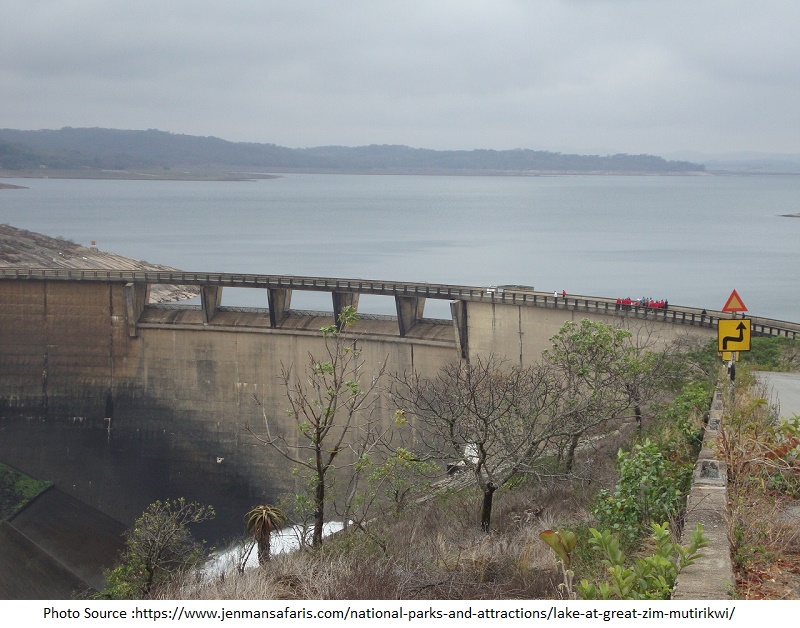
Bounded by the Beza Range on the north Mutirikwi National Park is a recreational park that extends over 16,900 hectares among which 9,300 hectares is occupied by the Lake Mutirikwi. It’s one of the country’s less visited areas for outdoor entertainment. The park was established in 1960. Spectators will see Great Zimbabwe, Africa’s second-biggest ancient stone structure which is located on the southern side of the Park and Masvingo city to the west of the park. The park houses more than 25 species of wild mammals including buffalo, eland, duiker, impala, reedbuck, kudu, waterbuck, white rhinoceros, wildebeest, zebra, giraffe, and hippopotamus etc.
10. Masvingo
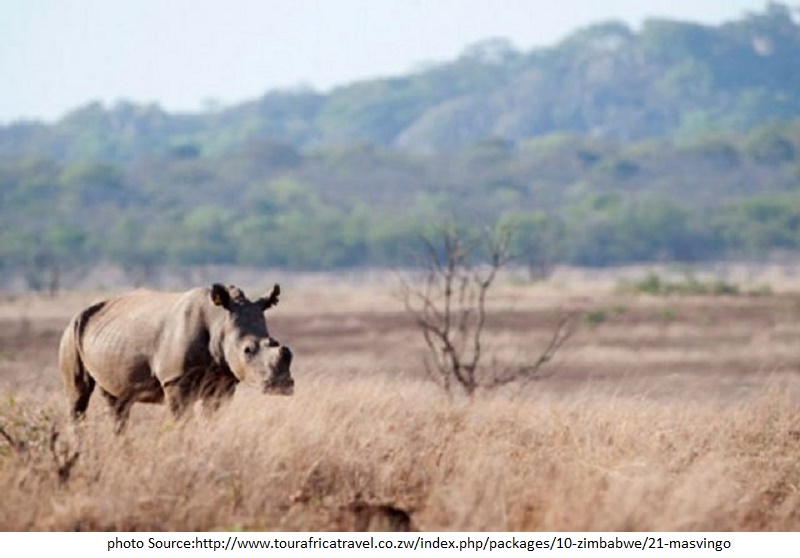
Masvingo or former Fort Victoria is located in south-eastern Zimbabwe. It is the capital of Masvingo Province and closes to Great Zimbabwe the national monument the country got its name. Masvingo is one of the key drops off points for VIP buses leading through to the southern border of the country. It stands on the edge of the Mutirikwi National Park. Masvingo has plenty of opportunities for outdoor recreation. Obviously, the real treat is the UNESCO World Heritage Site of Great Zimbabwe, which lurks between the jungle some 20 kilometers away. These 700-year-old relics crumble and crack under the sun, manifesting tales of the nation’s old Shona-speaking folk. The so-called Hill Complex and Great Enclosure are considered as the most wonderful ex instance of drystone architecture on earth!
11. Mutare
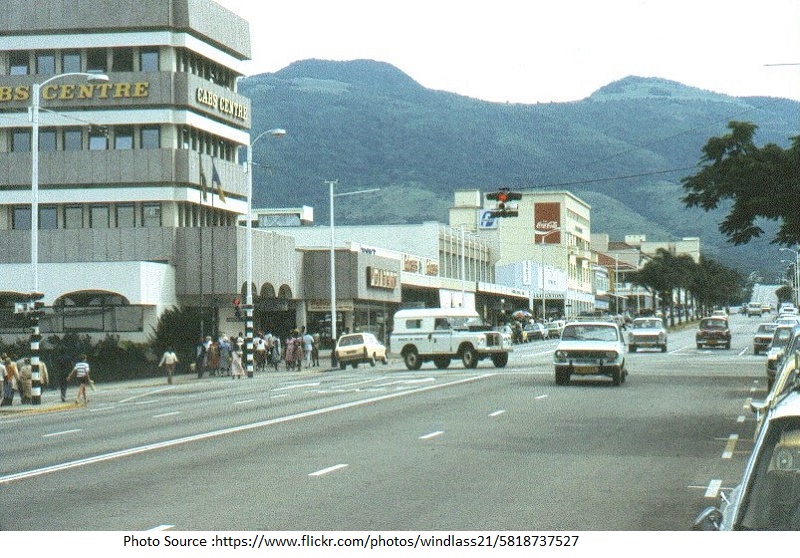
The entrance to the most distant eastern fringes of Zimbabwe and the Nanga National Park besides, Mutare sits among the steep-side valleys of Manicaland. You can see all around the tops of the Bvumba Mountains that enclose the town. This made the place something of an enclave of civilization in the dense southern African wild. Now the place is flourishing with a lovely clutch of guesthouses and cheap hostels. Visitor can enjoy a nice stopover on route to hike the hills and follow the peculiar Samango monkey atop the arduous Eastern Highlands.
12. Hwange National Park
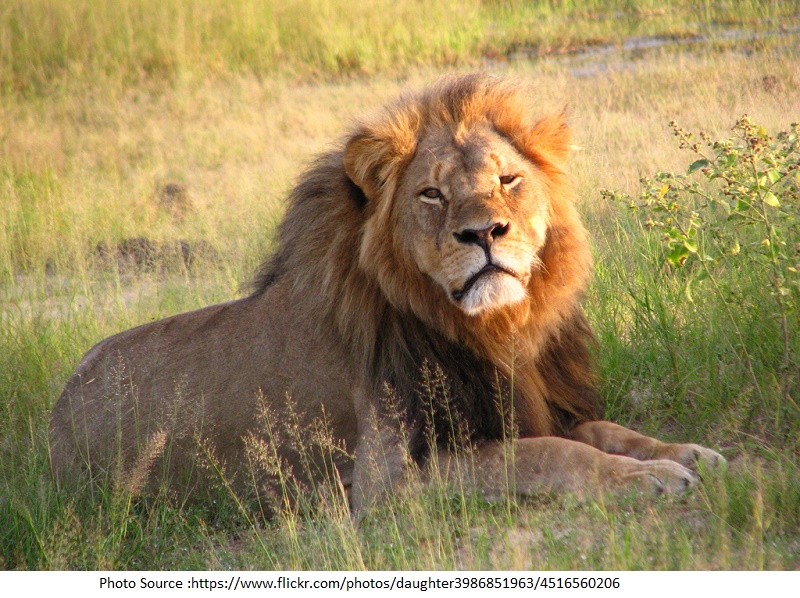
Immense and boastful, it is the biggest game reserve in Zimbabwe. It is the home of all of Zimbabwe’s specifically protected wildlife and is situated on the western side of the country between Bulawayo and the well-known Victoria falls. The park has limited or about non-existent rainfall and is mostly dominated by desert related woodlands, for example, the Zambezi teak. The weather is manifested by the park’s vicinity to the Kalahari Desert. Though its weather condition is harsh, the park accepts a very bountiful visitors following. There are nearly 100 mammal species, 400 bird species and among these are 19 big herbivores and close to eight big carnivores. This park is the only place where you can see gemsbok and brown hyena in their more sizeable numbers. The park was founded in 1928 and this is a must visiting place of Zimbabwe.
13. Nyanga National Park
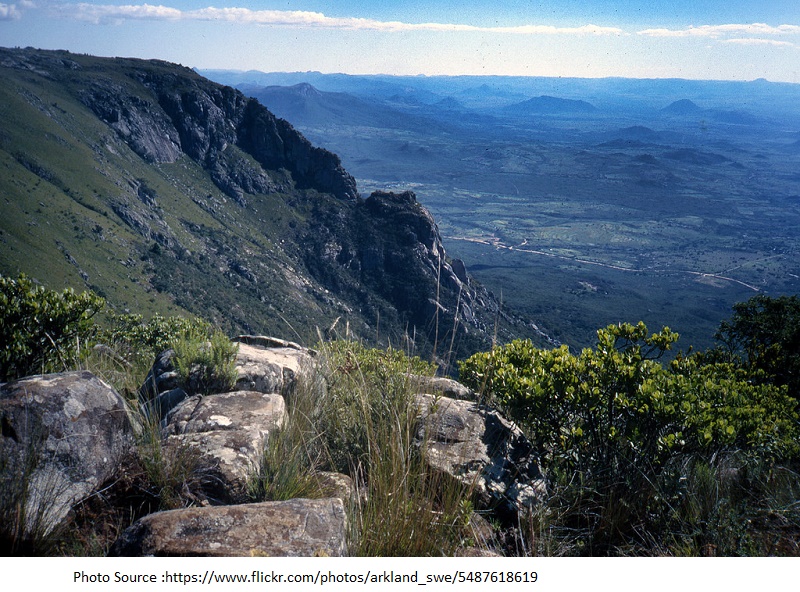
The abode of the Highveld is a wild and lovely place. Standing on the very roof of Zimbabwe, more than 1,800 meters above sea level, it’s created by colossal hills of dolomite rock, and dangling boulders that crunch in the cold wind. Clad in a wilderness of msasa trees and cypresses that are rare to these areas, the residence here can house a real otherworldly order of animals. Many are native, like the Old World Samango monkeys, with their white-brushed throats that can only be seen in these regions. You’ll also see a dilettantish of leopards and lions, just in case you wanted a taste of the pure African safari!
14. Matobo National Park

The mythical Matobo National Park is a cross-shaped reserve located just south out of aforesaid Bulawayo. Eminent since ancient times, for its strange order of inselbergs and hoodoo rock formations, it’s a land of sculpted granite peaks and anthropomorphic slopes. These have been a sanctuary for men for millennia. Today it’s possible to find out the remains of southern Africa’s pre-history engraved into the stone at places like the Nswatugi Cave. In the mean time, others come to follow ungulates in the Hove Wild Area – the presented game park here; an area of sable antelope and wildebeest, baboon group and leopards.
15. Bulawayo
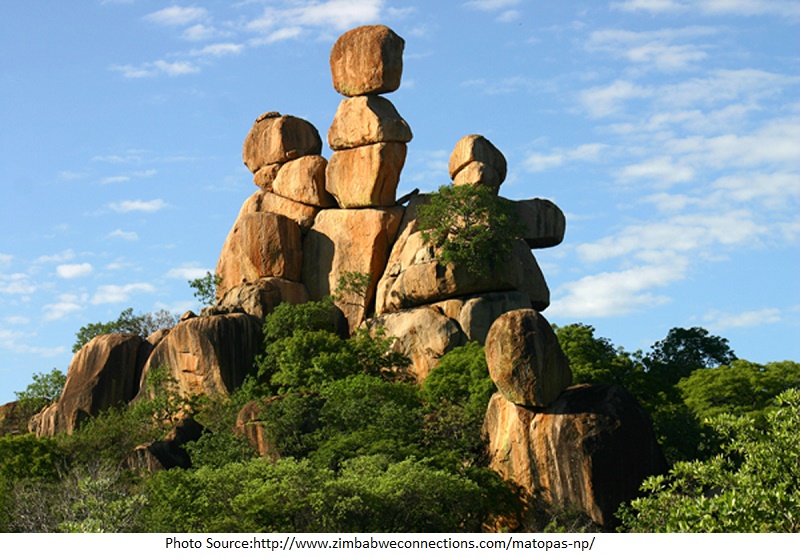
Bulawayo belies a kind of New Orleans vibe. It’s got old colonial frontage that exudes art deco and Victorian regal styles. It’s got exciting trees dotting its old highways, and the irregular Anglo-esque public house occupying the archway. But this second city is more than just historical ruins. It’s also an industrial and economic center, once famous for its smoke-disgorging factories, and still crisscrossed by more train lines than you can vibrate a Ndebele tribal amulet at. The town is green and flowery, with bougainvillea drifting over the rooftops and palms casting the roundabouts. Among these, all you can see pretty governmental edifices, go marketing for trinkets or scheming your next safari out to the south-western parks.
16. Harare
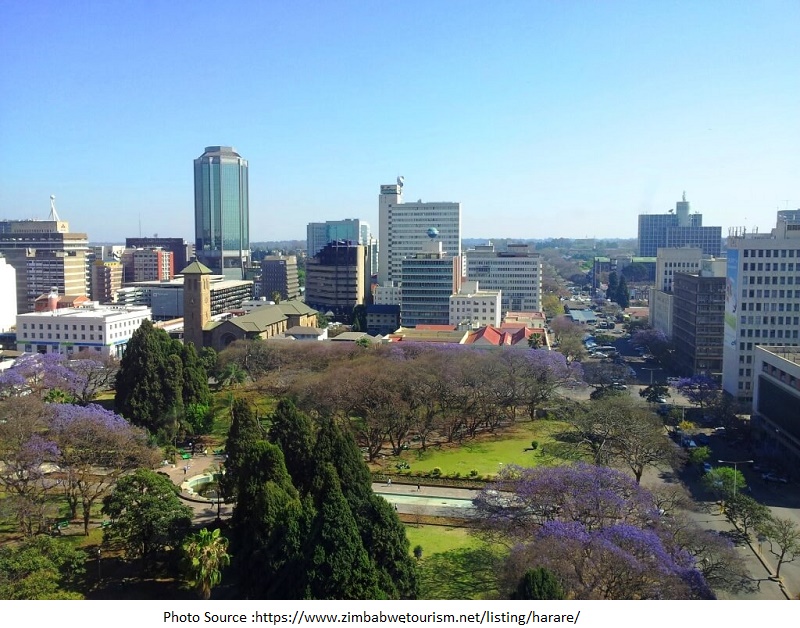
Some three million people refer to the metropolis of Harare their home. This is not only the capital but also the biggest city in the nation. Standing on plateaus of Zimbabwe’s central highlands, it sure looks the part. Unlimited steel-clad skyscrapers go up from its CBD, the economic center of the country. Streets and the downtown buzz with busy traffic and shoppers from morning until night. And there’s history too, poking out with the especially preserved National Gallery, in the national archives, and the Queen Victoria Museum. Without these, tourists here can visit the pretty parks and stroll among the jacarandas that famously pepper the roadways.
17. Nyanga Mountain
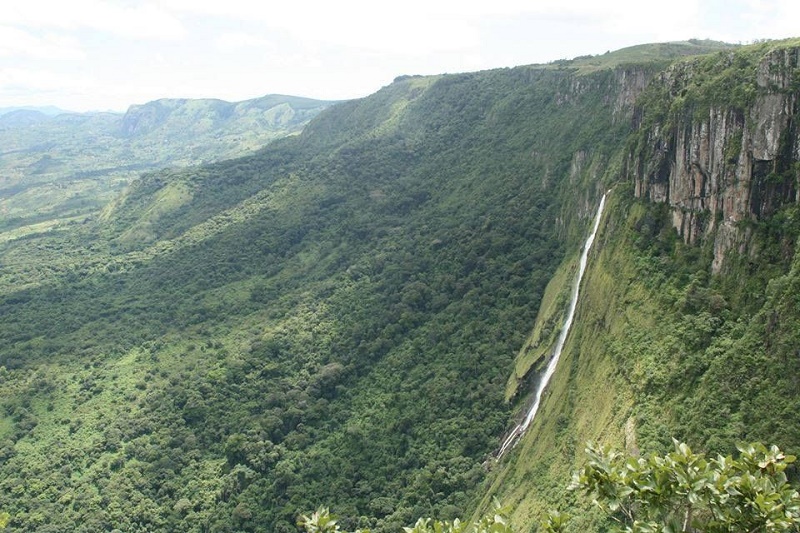
The Nyanga Mountains brag about the highest peak in Zimbabwe which has been named “world’s view”. It’s because the pinnacle is plain on the top. Another mythical site, the mountain has a reputation for being holy and taking its defilement lightly won’t be wise. Over the years there have been “rumor” of missing persons and other unexplainable incident. In spite of these negative reports, the Nyanga Mountains in the Eastern Highlands are visited by many tourists every year. This arduous terrain offers hiking, kayaking, mountain biking among other adventurous outdoor activities. With much cooler weather, as opposed to the Zambezi and Kariba intense heat waves, this hazy recession must be on your travel list.
18. Great Zimbabwe
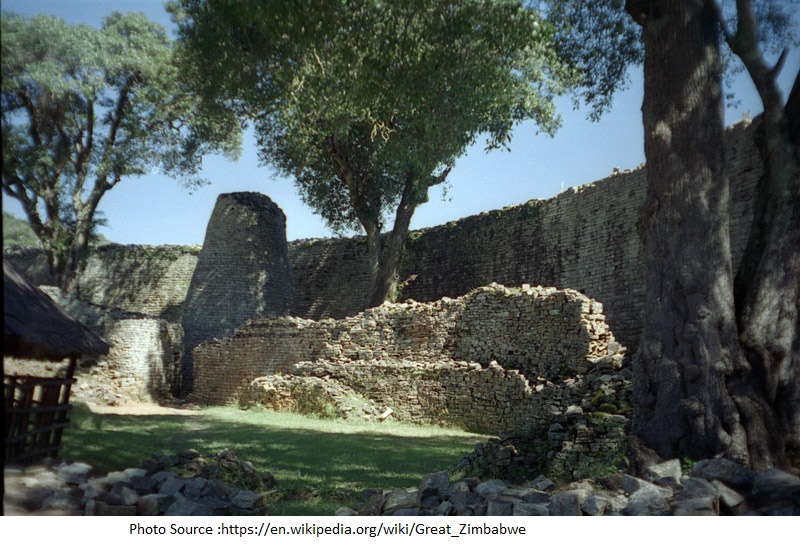
This place must be considered as a top place to travel when you are in Zimbabwe. It is because it is in itself a historic tale that needs no telling. On the outskirts of the city of Masvingo, are the biggest and probably some of the ancient relics in Africa. Great Zimbabwe remains are thought to have been built at the time between the 11th century and the14th century. They are the oldest relics in the southern African area. Taking a trip to marvel at this historical giant is not an experience one should simply avoid, especially those who have a great interest in archaeology and history. It can’t be said that one did and perceived all the exhilarating things and marvels that Zimbabwe has to offer but never saw the Great Zimbabwe Ruins. The country got its name from this historic relic and obviously, this is an architectural wonder to behold.
19.Matopos National Park
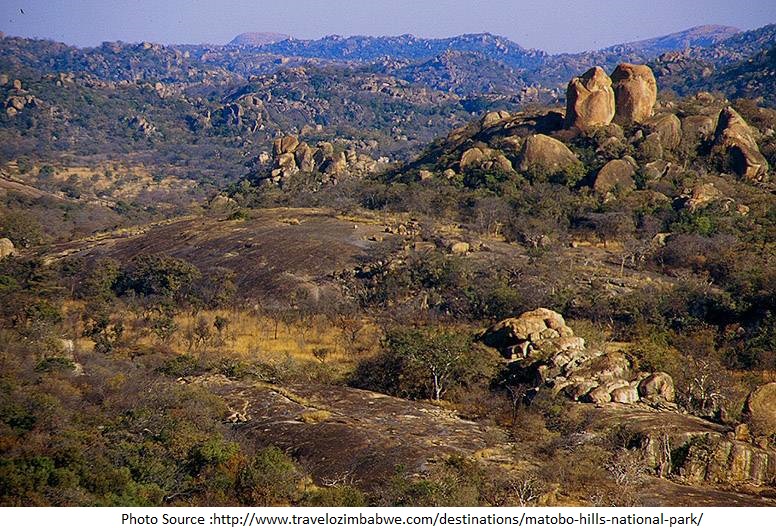
The Matopos National Park attains its competence from the huge photogenic boulders that balance dangerously atop each other strewn across the landscape. This region was named by the great Ndebele King Mzilikazi whose tomb along with that of Cecil John Rhodes’. These are to be seen near to and in the park respectively. Any visitor with an interest for hiking will love the area and more probably will fall in love with its endless offering of wildlife. The wildlife although greatly abated by poaching still thrives wonderfully. The park notwithstanding the balancing rocks brags about the world’s biggest gathering of black eagles. Usually, 1/3 of the eagle species of the world, wildcat, springhare, and baboon’s monkeys are commonly seen in this area. The rivers are full of fish ranging from bass to bottle fish. The park has lodges, chalets, and campsites all ready for use for any avid group of visitors or the lone adventurer.
20. Chinhoyi Cave
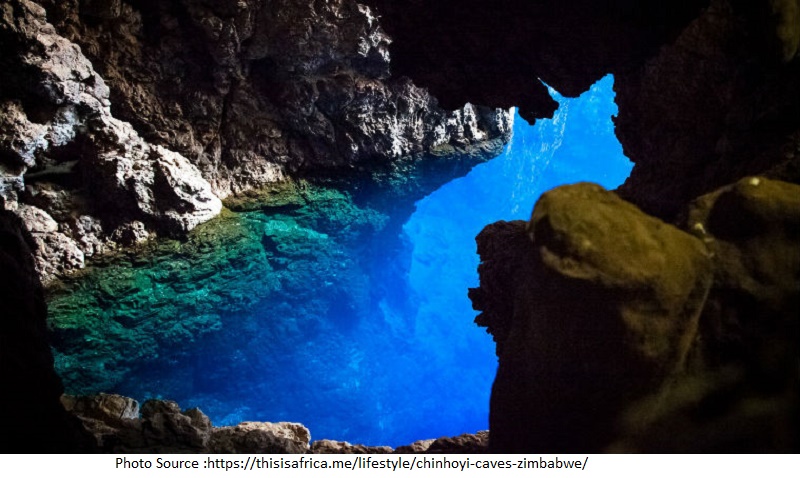
The usual name for the Chinhoyi Caves is “Chirorodziva” which means the “Pool of the Fallen.” The caves are formed with a series of tunnels which will lead you on a descent down to the main cave which is wonderful with its cobalt colored water. This pool is named as the Sleeping Pool and has become very famous among the divers. They have gone as deep as 50m and the vision is still incredibly good. There are camps and caravan sites where you can spend the night or have a picnic whilst exploring the caves. The Caves are situated about 9 kilometers north-west of the town of Chinhoyi, 120 kilometers from the capital city of Harare.

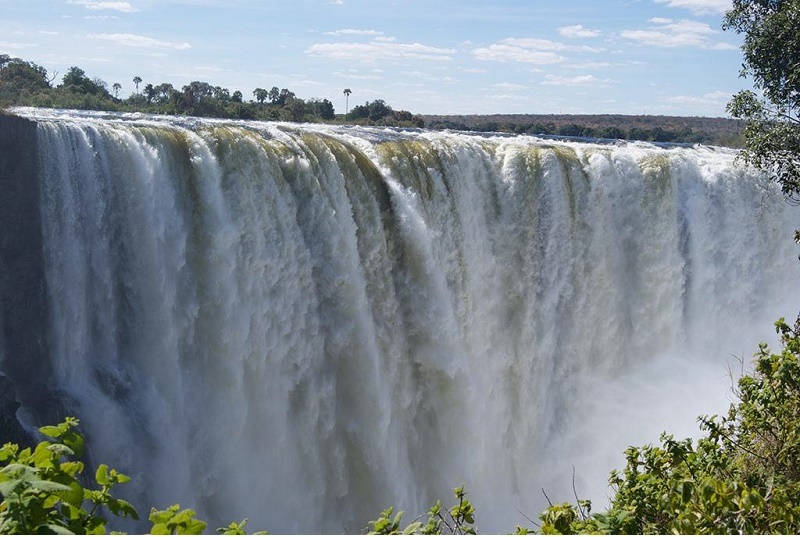
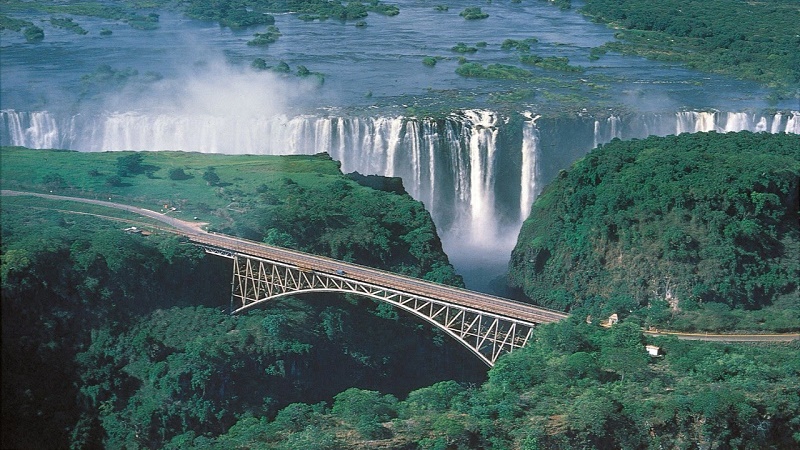
Love you Zimbabwe